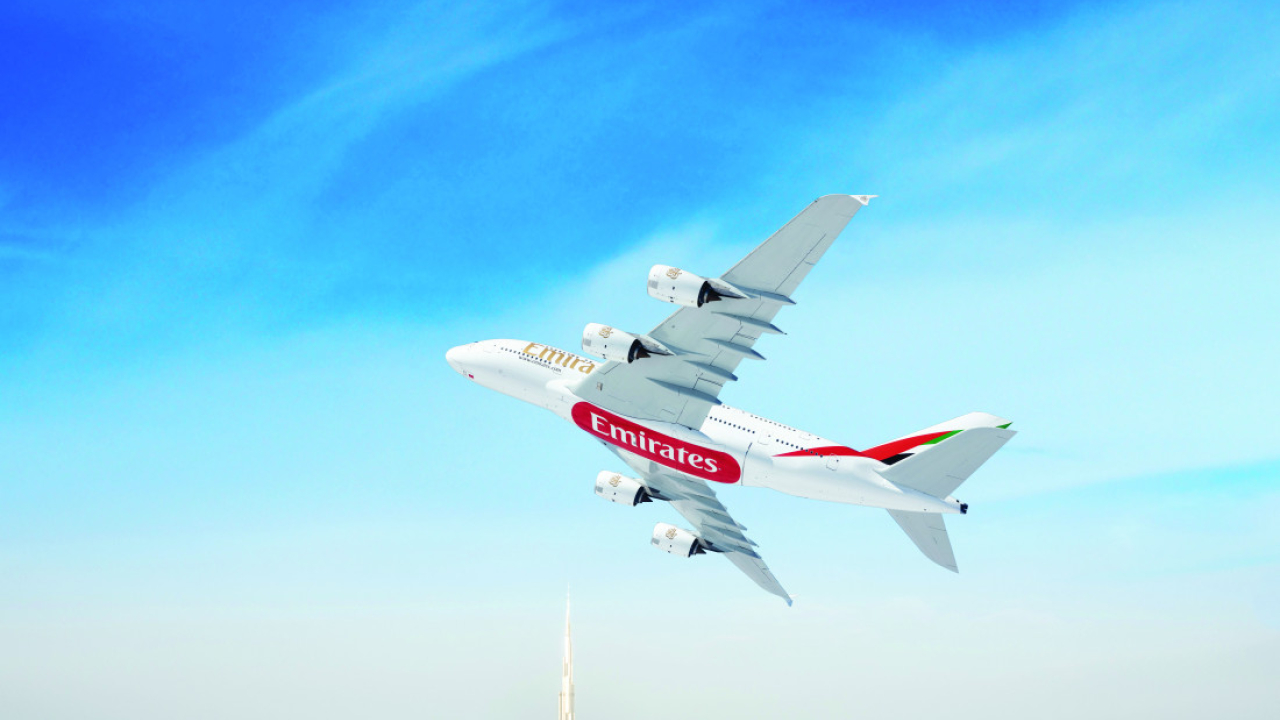TOURISM: Waking the sleeping giant with class and culture
The world of tourism and the growth of air transport is inextricably linked. Marcelle Nethersole meets the people with the responsibility of putting Abu Dhabi on the map and finding ways to attract the discerning travellers who have already written off vacations in the emirate's neighbouring states.

It’s fair to say that for most tourists the UAE means Dubai, the fun-loving emirate with beautiful beaches, luxury hotels and a reputation for glamour and celebrity partying life-style. But barely 100 kilometres away the UAE’s capital city and the largest of the six emirates that makes up the UAE is stepping up its focus on tourism – but with a very different approach.
Historically, Abu Dhabi has been thought of as purely a business destination. Ninety percent of the UAE’s carbon resources are in Abu Dhabi which of course gives it significant access to funds to invest in diversification and according to His Excellency, Mubarak Al Muhairi, Director General of Abu Dhabi Tourist Authority (ADTA) giant steps are being taken to create a new, sophisticated destination that will attract visitors to either extend business trips or to visit the region for the first time, in itself creating opportunities for airlines and even business jet charter operators to increase operations in the country.
“Abu Dhabi is a truly unique proposition with its own distinctive character, philosophy, cultural heritage and future aspirations,” says Al Muhairi. “True, we share many common qualities and values with our regional neighbours but we seek above all to define ourselves by our uniqueness. Our brand reflects the defining characteristics of Abu Dhabi, it embodies the prevailing ambiance of quiet dignity and our deep respect for the time-honoured traditions and values of our ancestors. It also symbolises our uncompromising commitment to maintaining the highest standards of quality and aesthetic, cultural and environmental harmony in our plans for the development of the emirate’s tourism proposition in the years ahead.”
I offered His Excellency his potentially most difficult challenge, my mother. She is a culture-vulture who has already decided Dubai does not appeal to her due to its known partying ways and a lack of cultural highlights. How could he persuade her to visit Abu Dhabi?
“I think your mother would be very happy to visit as we have a rather unique cultural offering which goes deep to the very soul of Abu Dhabi. I am sure she will be very impressed by the daily guided tour of the Sheikh Zayed Grand Mosque where her UAE national guide would introduce her to the fantastic architecture of the mosque, the heritage of Sheikh Zayed the founding father of the UAE and give her an insight into the practices of Islam,” says Al Muhairi.
“She could then go and tour the heritage village on the Corniche, or the Al Hosn Royal Palace, the home of our ruling family, or even the Falcon Hospital, where she could try her hand at falconry. She could visit the Emirates Palace Hotel, if she isn’t staying there, and see modern Arabian architecture in all its splendour, tour the Emirati Expressions exhibition in the hotel’s Gallery One and see the work of talented UAE artists. She could take a safari in the desert or visit the historic oasis city of Al Ain where she could tour the national museum, visit the camel market and tour the recently renovated Al Jahili Fort with its fascinating photographic tribute to the British explorer Wilfred
Thesiger, who we call Mubarak Bin London, and who crossed the Empty Quarter in the 1940s and 1950s. Culture is all around us here. Music and poetry also play a large part of life here.”
If all that wasn’t exciting enough ADAC has announced that two of the world’s greatest museums are to have a presence in the city with the arrival of the Louvre Abu Dhabu and Guggenheim Abu Dhabi museum.
“You will see the first open within five years,” says Al Muhairi, “Groundbreaking of the Louvre Abu Dhabi is imminent. Up until then we will continue to stage major exhibitions and performances in our quest to further stimulate the local and regional appetite for arts appreciation,”
I asked Lawrence Franklin, Strategy & Policy Division Director at ADTA, how many tourists, as opposed to business visitors, Abu Dhabi receives at the moment.
“This is hard to say precisely but from data gathered in we had 1.5 million arrivals in 2008 basically a 4% year on year growth. We work in hotel rooms as opposed to hotels and we currently have 13,000 rooms and an average of 85% occupancy. We hope to receive 2.7 million guests by 2012 and have 27,000 hotel rooms and we are on course to meet that,” says Franklin.
Abu Dhabi offers a mix of hotels and hotel apartments. Two of the most luxurious hotels in Abu Dhabi are the Emirates Palace and the Shangri-La but a new project is also being worked on.
“Aldar is planning to open seven hotels on Yas Island,” says Franklin “These will be a mix of five-star, four-star and three-star hotels, which together will boost Abu Dhabi's accommodation inventory by more than 3,000 rooms and its food and beverage stock by in excess of 30 outlets. They will be managed by world-class operators including Anantara, Radisson SAS, Rotana and Crowne Plaza. Before November we will also welcome the new Aloft hospitality brand to Abu Dhabi when it opens in ADNEC’s Capital Centre. This will be the first Aloft property in the Middle East, and the largest in the world, with 408 rooms,” he added.
And aside from its cultural offering Abu Dhabi has something else very special up its sleeve. For those looking to relax on a desert island then Abu Dhabi is ideal. Unknown by many people Abu Dhabi is an archipelagic with nearly 200 islands dotted along its coastline, making island hopping a popular pastime. ADTA is working on a new tourism destination development called ‘The Desert Islands’
“Actually Desert Islands is a destination to which you can truly apply the much abused word ‘unique’,” says Al Muhairi. “They can’t be compared to the Maldives or any other desert Island. It is a destination where the heritage and the environment of the area is being strictly preserved. It will appeal to high net worth individuals, it will be a real getaway and provide a face of Arabia rarely seen.”
“The Desert Islands destination is governed by a strict environmental sustainability plan, the waters around Sir Bani Yas Island are protected and rich in marine life. We have the Middle East’s first wind turbine working on the island and producing electricity and have entered into an agreement with Masdar, the Abu Dhabi Government’s future energy project, to progress an alternative energy plan for the island. We hope eventually to source 80% of the island’s needs from renewable sources. On Saadiyat Island which is another flagship project being progressed by TDIC, our tourism asset development arm, is government by a strict environmental management policy. Developers are restricted from building more than 60 metres away from natural dunes which protect turtle breeding grounds on Saadiyat Beach and we have established mangrove rehabilitation and replanting nurseries to ensure sustainability of this important biodiversity resource,” says Muhairi.
The development of Abu Dhabi International Airport, the main entry point to the Emirate is linked to the plans.
Currently there are 37 international carriers flying in and out of the airport. Will this increase?
“Of course,” says Franklin. “Abu Dhabi is presented by a global hub that the Middle East has become. We are probably one of the few bright spots on the economic landscape for the next few years. Singapore Airlines is upgrading its service to Abu Dhabi to a daily flight. We are working very closely with the Abu Dhabi Airports Company to deliver a winning proposition for airlines. They will find, in Abu Dhabi, strong governmental support, a growing feeder base, a modern and expanding infrastructure and commitment to delivering a sustainable destination through considered, measured growth. Of course there is also Al Bateem used by many business customers and Al Ain which also has international business coming through,” says Franklin.
Al Muhairi also points out the benefit from the development of Abu Dhabi International Airport as well as the Al Maktoum airport at Dubai World Central, Jebel Ali by adding: “I can envisage a lot of swop-over business. People visiting Dubai will hear of Abu Dhabi’s attractions and will visit, whether on a day trip, or a stop-over. The same will be true, and is already happening in the opposite direction. Our offerings are different, but complementary so we should both benefit. We also offer some great moves in terms of the VIP tourism infrastructure.
TDIC (Tourism Development and Investment Company which owns the Desert Islands complex and of which Al Muhairi is managing director) is now offering charter flights from Abu Dhabi International to Sir Bani Yas Island.
“Private charter will play a significant role in opening up the Al Gharbia region,” he says. “Our intention is to build a high-end destination for discerning travellers and to position Abu Dhabi as the business tourism hub of the region, business aviation therefore would be an essential element in delivery of these goals,” says Al Mahairi.
Abu Dhabi is already beginning to balance business visitors and tourists alike and is known in the ME as a large conference destination and is aiming at bringing major events to the emirate from conferences to Formula One motor racing.
“Business tourism is our mainstay and, as it is also the most resilient segment of the industry, we are quite fortunate to be in this position in these challenging times,” Franklin says. “We have our own Business Tourism division at ADTA which acts as a convention bureau and extends significant assistance to those wishing to bring major events and conferences here – including assistance with government liaison. We have secured the World Ophthalmology Congress meeting for 2012 which will bring 12,000 delegates here and are in talks with other leading medical associations to be considered as a venue for their annual meetings,” he says.
ADTA has been carefully scrutinising its potential markets for attracting its new class of visitor. “We are looking at the GCC, Asia and traditional European markets,” Al Muhairi says. “We are fortunate in having access to the 30 million plus consumers in the GCC who have a tendency to travel locally in times of uncertainty. We are also expanding our geographic outreach so that we are not at risk from any single market, hence the recent opening of our offices in Australia, China and Italy which could be growth areas for us.”
ADTA intends to carry on promoting Abu Dhabi as a tourist destination already with its own brand and slogan ‘Travellers Welcome’. The tourist authority is already recognisable at major travel trade fairs around the world, and will be attending 17 trade fairs across 11 countries this year including the Arabian Travel Market in Dubai this month.
Any final words from His Excellency to promote Abu Dhabi and of course sway my mother?
“Abu Dhabi has taken a conscious decision to base its evolution on the ethos of respect for its heritage, traditions and environment and we will hold firmly to that. These are values which characterise the emirate and its people, they are, if you like, a part of our DNA. There will be progress, but it will be measured, sustainable, respectful and will deliver a destination aimed at enriching lives, those of the people who live here, and those who come to visit to engage with our culture and allow us to engage with theirs.”
What do you think mum? A trip to Abu Dhabi this year?
Stay up to date
Subscribe to the free Times Aerospace newsletter and receive the latest content every week. We'll never share your email address.

